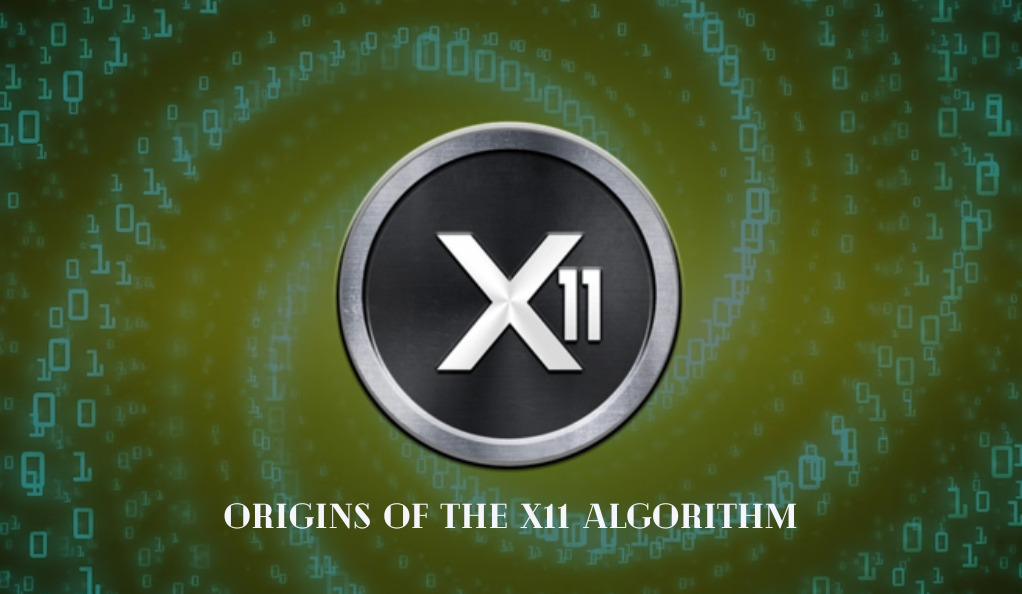In the vast and intricate world of cryptocurrencies, mining stands as one of the foundational pillars. But what exactly is mining, and why are algorithms like X11 so crucial to this process? Let’s delve into the basics.
What is Cryptocurrency Mining?
At its core, cryptocurrency mining is the process by which new coins are introduced into circulation and transactions are added to the public ledger, known as the blockchain. Miners use powerful computers to solve complex mathematical problems. Once a problem is solved, a new block is added to the blockchain, and the miner is rewarded with a certain number of coins. This process not only validates and records transactions but also ensures the security and integrity of the entire network.
| Term | Description |
|---|---|
| Block | A collection of data or transactions that miners verify and add to the blockchain. |
| Blockchain | A decentralized and distributed ledger that records all transactions across a network. |
| Hash Rate | The speed at which a miner’s computer can complete an output of a hash function. Measured in hashes per second (H/s). |
| Proof of Work (PoW) | A consensus algorithm where miners compete to solve mathematical problems to validate transactions and create new blocks. |
The Role of Mining Algorithms
Every cryptocurrency operates on a specific algorithm, which dictates how mining occurs. These algorithms determine how the mathematical problems are formulated, how difficult they are, and how they can be solved. The choice of algorithm can influence the security, efficiency, and profitability of mining.
Enter the X11 algorithm. As one of the many algorithms in the crypto space, X11 has garnered attention for its unique structure and benefits, which we’ll explore in-depth in the subsequent sections. But for now, it’s essential to understand that algorithms like X11 play a pivotal role in shaping the cryptocurrency landscape, influencing everything from the coins we trade to the security of our transactions.
Origins of the X11 Algorithm
The world of cryptocurrency is replete with innovations, and the X11 algorithm is a testament to this spirit of continuous evolution. But where did X11 come from, and what drove its creation?

The Genesis of X11
X11 was introduced by Evan Duffield, the creator of Dash (formerly known as Darkcoin), in January 2014. Duffield’s primary motivation was to address the shortcomings he perceived in the Bitcoin mining algorithm, SHA-256. He believed that a more complex and multifaceted algorithm could offer enhanced security and energy efficiency.
The name “X11” isn’t arbitrary. It denotes the algorithm’s unique structure, which incorporates 11 different cryptographic hash functions. This chaining of multiple functions was a novel approach, setting X11 apart from its contemporaries.
Differentiating X11
While Bitcoin’s SHA-256 and Litecoin’s Scrypt were gaining traction in the early days of cryptocurrency, X11 brought a fresh perspective to the table. Here’s how:
- Complexity: By using 11 hash functions, X11 is inherently more complex than algorithms that rely on a single function. This complexity is believed to offer better resistance against potential vulnerabilities.
- Energy Efficiency: One of the standout features of X11 is its energy efficiency. Compared to other algorithms, X11 was designed to be less demanding on hardware, leading to cooler system temperatures and prolonged hardware lifespan.
- Adaptive Mining: The multi-hash structure of X11 allows for a more even distribution of mining power. This reduces the risk of mining centralization, a concern prevalent in many other cryptocurrencies.
| Algorithm | Introduced By | Key Features |
|---|---|---|
| SHA-256 | Bitcoin | High security, power-intensive, ASIC-dominated mining. |
| Scrypt | Litecoin | Memory-intensive, initially resistant to ASICs but later adopted. |
| X11 | Dash | Energy efficient, uses 11 hash functions, adaptive mining, ASIC-resistant (initially). |
The 11 Hash Functions of X11
The heart of the X11 algorithm lies in its ensemble of 11 cryptographic hash functions. This unique combination not only sets X11 apart but also provides it with a robust security framework. Let’s delve into these functions and understand their collective significance.
A Deep Dive into the 11 Functions
The X11 algorithm doesn’t just rely on one or two hash functions; it employs 11 of them, chained sequentially. These functions are:
- BLAKE
- BMW (Blue Midnight Wish)
- Groestl
- JH
- Keccak
- Skein
- Luffa
- Cubehash
- Shavite
- SIMD
- Echo
Each of these hash functions was a candidate for the NIST SHA-3 competition, a rigorous contest aimed at finding a new standard hash function for the industry.
Why Multiple Hash Functions?
You might wonder, why go through the complexity of chaining 11 functions when many cryptocurrencies rely on just one? The answer lies in security and adaptability.
- Security: By chaining multiple hash functions, X11 reduces the risk of a potential vulnerability in one function compromising the entire system. Even if a few of these functions were found to be vulnerable in the future, the overall integrity of the X11 algorithm would remain intact due to the remaining secure functions.
- Adaptability: The multi-hash structure allows for a more adaptable mining process. If one hash function becomes compromised or less efficient, the system can potentially adapt by giving more weight to the other, more secure functions.
| Hash Function | Key Features |
|---|---|
| BLAKE | Known for its high speed and security. |
| BMW | Efficient and fast, with a focus on complex data structures for security. |
| Groestl | Optimized for 64-bit platforms and known for its energy efficiency. |
| Keccak | The winner of the NIST SHA-3 competition, renowned for its security and performance. |
The Synergy of the Ensemble
While each hash function in the X11 algorithm is powerful in its own right, their true strength is realized when they operate in tandem. This synergy ensures that the X11 remains one of the most secure and efficient mining algorithms in the cryptocurrency space.
Advantages of X11 Mining
The X11 algorithm, with its unique structure and approach, brings a plethora of advantages to the table. These benefits have made it a popular choice among many in the cryptocurrency community. Let’s explore these advantages in detail.

Energy Efficiency: A Sustainable Approach
One of the most significant criticisms of cryptocurrency mining, especially Bitcoin, is its high energy consumption. X11, however, was designed with energy efficiency in mind.
- Lower Heat Generation: Due to its less intensive computational requirements, X11 mining tends to produce less heat compared to other algorithms. This not only reduces the environmental impact but also results in a longer lifespan for mining hardware.
- Cost-Effective: Reduced energy consumption translates to lower electricity bills, making X11 mining more cost-effective in the long run.
Enhanced Security: A Multi-Layered Defense
The chaining of 11 hash functions isn’t just for show. This design choice offers a robust security framework:
- Resistance to Vulnerabilities: As previously mentioned, even if a few of the hash functions were to be compromised, the overall integrity of the X11 algorithm remains intact due to the security of the remaining functions.
- Protection Against ASIC Dominance: Initially, the complexity of X11 made it resistant to ASIC (Application-Specific Integrated Circuit) miners, ensuring a more decentralized mining landscape. However, it’s worth noting that with technological advancements, ASICs for X11 have been developed, but the algorithm still offers a more level playing field compared to some others.
Longevity and Adaptability: Built for the Future
Cryptocurrencies and their underlying technologies are in a constant state of evolution. X11’s design ensures it remains relevant:
- Flexibility: The multi-hash structure allows the algorithm to adapt over time. If newer, more efficient hash functions are developed, they could potentially be integrated into the X11 framework, ensuring its continued relevance.
- Forward-Thinking: The very inception of X11 showcased a willingness to think outside the box and anticipate future challenges. This forward-thinking approach bodes well for its longevity in the crypto space.
| Advantage | Description |
|---|---|
| Energy Efficiency | Lower energy consumption leading to reduced costs and environmental impact. |
| Enhanced Security | Multi-hash function design offers robust protection against vulnerabilities. |
| Longevity & Adaptability | Designed to evolve and adapt, ensuring its continued relevance in the ever-changing crypto landscape. |
Coins That Utilize X11
The X11 algorithm, with its myriad of advantages, has been adopted by several cryptocurrencies. While Dash is the most notable and the pioneer in using X11, several other coins have recognized the benefits of this algorithm. Let’s explore some of these coins and their significance in the market.
Dash: The Flagbearer of X11
Dash, formerly known as Darkcoin, is the cryptocurrency that introduced the X11 algorithm. Created by Evan Duffield, Dash aimed to address some of the perceived shortcomings of Bitcoin. With features like InstantSend and PrivateSend, Dash offers quick transactions and enhanced privacy, respectively.
Other Notable Cryptocurrencies Using X11

- CannabisCoin (CANN): A coin focused on the cannabis industry, aiming to simplify transactions within legal marijuana markets.
- StartCoin (START): Designed to promote and support crowdfunding campaigns and projects, incentivizing users to hold and use the coin rather than sell it.
- MonetaryUnit (MUE): Aims to provide a decentralized and scalable monetary system, focusing on low transaction fees and fast confirmations.
- Pura (PURA): An international digital currency that allows consumers to transact with anyone in the world directly, privately, and instantly.
Market Significance of X11 Coins
- Innovation and Adaptability: Coins using the X11 algorithm often showcase a willingness to innovate and adapt. This adaptability can be seen in features like Dash’s InstantSend or Pura’s focus on international transactions.
- Security and Efficiency: The inherent security and efficiency of the X11 algorithm translate to the coins that use it. This can lead to increased trust and adoption by users and investors.
- Diverse Use Cases: From the cannabis industry to crowdfunding, X11 coins cater to a wide range of markets and use cases. This diversity can lead to more robust ecosystems and communities.
| Cryptocurrency | Key Features |
|---|---|
| Dash | Quick transactions, enhanced privacy, masternode system. |
| CannabisCoin | Focused on simplifying transactions within the legal marijuana industry. |
| StartCoin | Supports and incentivizes crowdfunding campaigns. |
| MonetaryUnit | Decentralized monetary system with low fees and quick confirmations. |
| Pura | International transactions with a focus on privacy and speed. |
Challenges and Criticisms
No technology, regardless of its innovation and potential, is without its challenges and criticisms. The X11 algorithm, despite its many advantages, has faced its share of scrutiny from the crypto community and experts. Let’s delve into some of these challenges and the responses from the community.
ASIC Dominance: A Double-Edged Sword
One of the initial selling points of the X11 algorithm was its resistance to ASICs, promoting a more decentralized mining landscape. However, as with many algorithms, the development of ASICs tailored for X11 was inevitable.
- Challenge: The emergence of X11 ASIC miners led to concerns about mining centralization. With ASICs being more efficient and powerful, there’s a risk of large mining operations dominating the network, sidelining individual miners using GPUs.
- Community Response: Some coins have considered or implemented algorithm tweaks or forks to counteract ASIC dominance. Others argue that ASICs, by increasing the total hash rate of the network, enhance its security.
Complexity and Overhead
The very feature that provides X11 with its security – the chaining of 11 hash functions – also introduces complexity.
- Challenge: The multi-hash structure, while secure, can introduce overhead, especially for devices with limited computational resources. This can be a concern for lightweight devices or systems aiming for rapid transaction validation.
- Community Response: Many believe that the security benefits outweigh the overhead concerns. Additionally, as technology advances, devices become more capable of handling such complexities efficiently.
Future-Proofing the Algorithm
In the fast-paced world of crypto, staying ahead of potential threats and technological advancements is crucial.
- Challenge: Concerns arise about how the X11 algorithm will adapt to future challenges, especially with the advent of quantum computing and other cryptographic advancements.
- Community Response: The modular nature of X11, with its multiple hash functions, offers a degree of adaptability. If a particular hash function becomes obsolete or vulnerable, it can potentially be replaced or modified.
Conclusion
In the intricate realm of cryptocurrency, the X11 algorithm emerges as a beacon of innovation, uniquely chaining 11 cryptographic hash functions to enhance both security and energy efficiency. From its adoption by Dash to its evolution in mining hardware preferences, X11 has showcased its adaptability and significance in the crypto community. However, like all technologies, it faces challenges, from ASIC dominance to future-proofing concerns. The crypto community’s proactive approach, combined with the inherent strengths of X11, positions it well for the future, emphasizing the importance of continuous learning, adaptation, and collaboration in the ever-evolving world of digital currencies.
At axerunners.com, our goal is to furnish well-rounded and trustworthy information regarding cryptocurrency, finance, trading, and stocks. Nonetheless, we avoid providing financial advice and instead encourage users to conduct their own research and meticulous verification.
Read More













